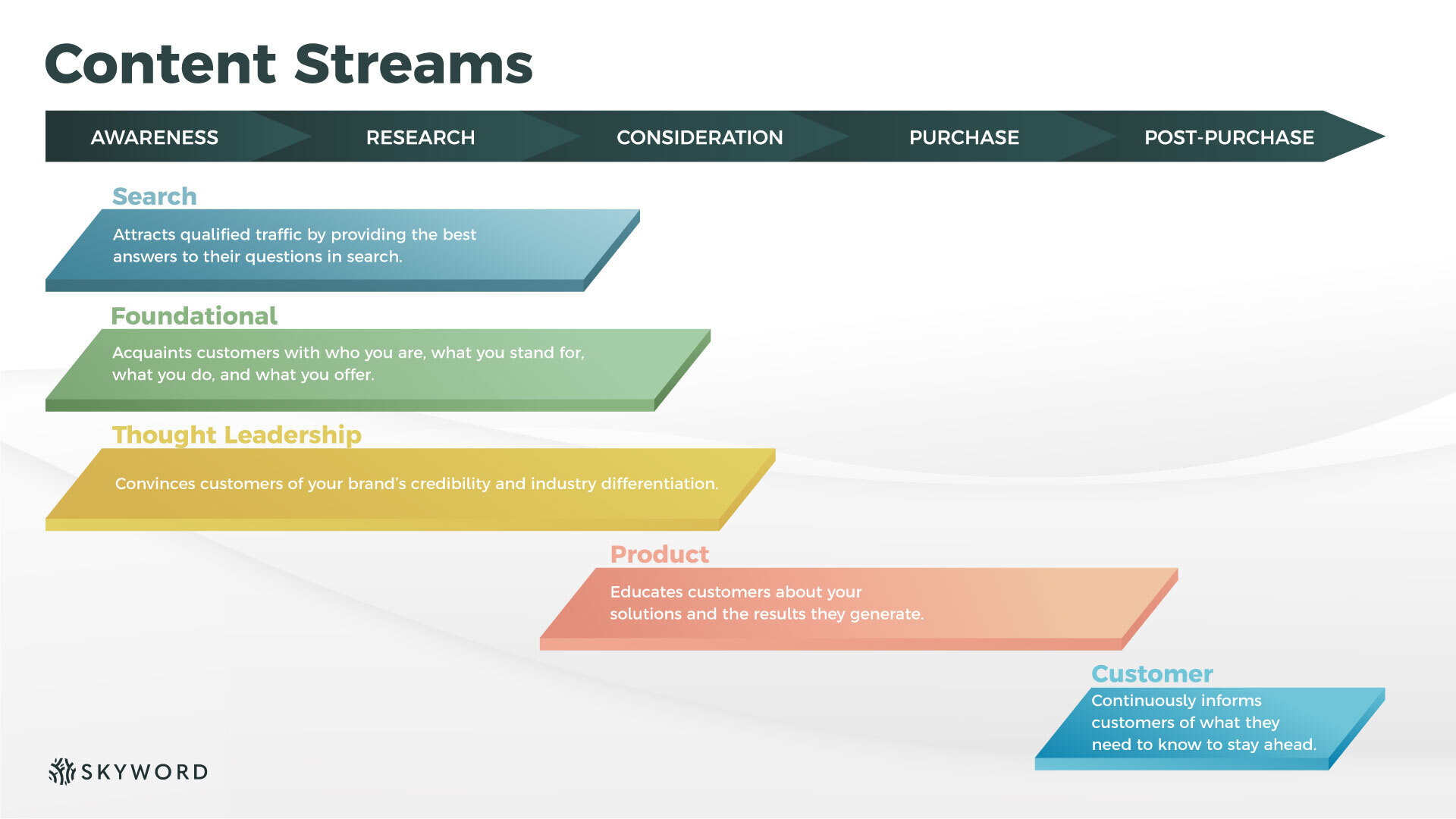Content Strategy
The 5 Components of an Effective Content Ecosystem
By Jonathan Crowl on October 20, 2021
The traditional model of marketing has too often approached content as a series of isolated projects and assets making up a brand's digital presence. In this approach, blog posts, social media posts, and other forms of content are evaluated based on their individual performance rather than their contribution to a larger campaign or marketing strategy.
Even when this method delivers success and ROI, it places significant constraints on what those brand marketing efforts are able to achieve -- especially as those marketing strategies attempt to scale.
Without a cohesive content ecosystem structuring and enabling success across all your content assets, the effort poured into isolated acts of content creation can lure your marketing team into a false sense of productivity -- and rob you of the opportunity to build something that can grow in its influence, engagement, and scale.
A content ecosystem solves this problem by unifying content creation efforts across different marketing goals, buyer personas, and stages of the customer journey. The result is individual marketing assets that are collaborative in their efforts to deliver better brand marketing outcomes for your company.
Curious how you can achieve this at your organization? A successful content marketing ecosystem requires five key content streams supporting your marketing strategy. Here's a look at each of these five content streams and how they support your audience engagement efforts throughout the customer lifecycle -- including beyond the initial conversion.

1. Foundational Content
Foundational content is focused on translating what you do, what you offer, and how you're different in the most fundamental terms. Many consumers who encounter foundational content will have little to no familiarity with your business, may not fully understand the pain point they need to solve, and may not even be actively seeking out the kind of solution your brand offers.
When you create foundational content -- which can include your site product and solutions pages, your brand video, and behind-the-scenes content -- you are trying to familiarize potential prospects with your brand, what you offer and value, and how you can solve their problems. The goal of foundational content is to motivate some form of deeper engagement, whether that's a follow on social media or a filled form submission through a lead generation tool.
Ultimately, your goal with this content is to build awareness, begin to establish affinity, and make it easier for other content streams to continue engaging and qualifying those leads.
2. Search Content
Search content is a crucial inbound content channel that drives traffic to your website and other online properties by answering questions and offering solutions to queries entered into an online search engine.
Some of the prospects reaching you through search content will have already interacted with foundational content, but others will be brand new to your business. SEO-optimized videos and blogs are examples of search content that can contribute to your overall ecosystem. The use of structured data in your blogs and other content can be particularly valuable in directly and thoroughly answering questions your prospects are looking to answer.
As with foundational content, search content can facilitate new lead generation and other connections that can help you qualify leads as they move into the consideration phase.
3. Thought Leadership Content
Thought leadership content can work in two ways. First, it can be a secondary point of engagement with prospects that demonstrates the subject matter expertise of your brand's executives. But it can also function as a type of foundational or search content that helps prospects discover your brand through the engaging, expert insights of your in-house thought leaders.
Thought leadership can exist across blog posts, long-form social media posts, and digital video, along with other content channels that afford the space to demonstrate depth of knowledge on a subject. While it serves as effective awareness-level content, it can also play a valuable role in the consideration phase of the customer journey as prospects evaluate their options and determine their level of trust in potential brands and brand leadership.
4. Product Content
After high-level engagement and marketing goals are achieved, product content focuses specifically on the solutions and services your business is able to provide. The goal of product content is to demonstrate the value of your solutions to your prospects and make a case for your brand as the best solutions provider among the options your customer is choosing from.
Product content can include landing pages, product-focused blogs and videos, white papers, one-sheets, and other content that dives deeper into the nuts, bolts, and ROI of your products and services. By improving product content and supporting these efforts through improved lead qualification in earlier stages, your brand can increase its close rates and time-to-close as you leverage product content to convert new customers.
5. Customer Content
Marketing shouldn't end after the sale is completed. An effective content marketing ecosystem will continue to market to existing customers as your brand seeks to improve its customer retention and lifetime customer value (LCV).
Customer content can include blog posts, social media, video, email, and other owned media channels to improve engagement and customer satisfaction. From supporting the full functionality of your business solutions to announcing new features or services that will enhance your customer experience, this customer-centric content can improve your brand's reputation and support efforts to scale your customer base.
Learn more about the benefits of building a content marketing ecosystem by checking out our Ultimate Guide to Content Ecosystems.

